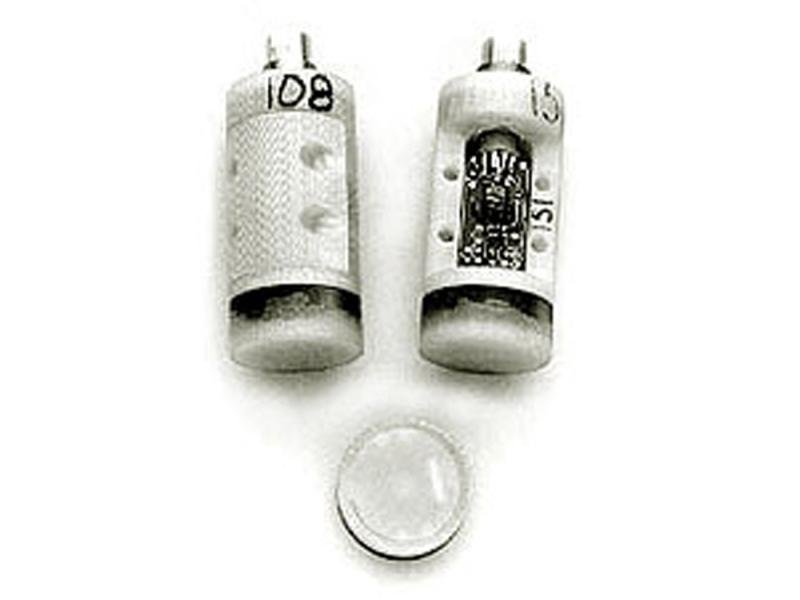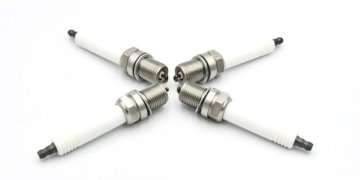The global SQUID sensors industry is on an upward trajectory, driven by technological advancements, strategic collaborations, and expanding applications across diverse sectors. The market, valued at USD 155.45 million in 2023, is forecast to grow at a CAGR of 4.37% from 2024 to 2034, reaching an estimated USD 247.21 million by the end of the forecast period.
Discover essential conclusions and data from our Report in this sample – https://www.transparencymarketresearch.com/sample/sample.php?flag=S&rep_id=75127
Market Overview
SQUID (Superconducting Quantum Interference Device) sensors are at the forefront of advanced measurement technologies due to their exceptional sensitivity in detecting minute variations in magnetic fields. Their ability to capture even the smallest magnetic anomalies makes them indispensable in industries such as environmental monitoring, geophysical exploration, and healthcare. As technological breakthroughs continue to shape the landscape, SQUID sensors are rapidly gaining acceptance in applications ranging from magnetoencephalography (MEG) and magnetocardiography (MCG) in the healthcare sector to mineral exploration and defense operations.
The market is witnessing increased investments from governments and private entities alike. With numerous national programs and initiatives promoting quantum research, SQUID sensor technology is evolving with a focus on enhanced sensitivity, reduced noise levels, and improved cost-effectiveness. This has opened new avenues in robotics, aerospace, and quantum computing, further expanding the scope and applications of these sensors.
Market Drivers & Trends
Government Initiatives and Funding for Quantum Research
Governmental support plays a crucial role in propelling the SQUID sensors market forward. Major economies, including China, the United States, and European nations, are investing heavily in quantum research. For instance, Chinese governmental investments are targeted at establishing leadership in advanced technology domains, including SQUID sensors. National laboratories and research centers, such as the National Quantum Laboratory, are fostering collaborations among academic institutions, research labs, and industry players to drive innovation. These initiatives not only provide the necessary funding but also accelerate the development and commercialization of cutting-edge sensor technologies.
Expanding Applications in Geophysics and Mineral Exploration
One of the key growth drivers for the SQUID sensors market is the increasing demand for precise geophysical measurements. Industries such as mining and oil and gas exploration are relying on SQUID sensors to detect underground mineral deposits and geological formations. With the rising demand for critical minerals like lithium, cobalt, and rare earth elements-essential for renewable energy technologies and electric vehicles-the role of SQUID sensors in enhancing exploration precision has become even more critical. Governments in resource-rich regions, including Australia and Canada, are promoting innovative exploration methods that integrate SQUID technology, thus ensuring efficient and sustainable resource extraction.
Technological Advancements and Cross-Industry Innovations
The competitive landscape is witnessing rapid innovation in sensor design and functionality. SQUID magnetometers, known for their broad dynamic range and ultra-high sensitivity, are gaining traction in various fields such as medical diagnostics, materials science, and industrial quality control. Advances in sensor technology are not only enhancing performance but also lowering production costs, making SQUID sensors a more accessible option for a broader array of applications.
Key Players and Industry Leaders
The SQUID sensors market is highly consolidated, with a limited number of players holding significant market share. Leading companies include Quantum Design Inc., Tristan Technologies, Inc., Magnicon GmbH, and Supracon AG. These industry giants account for approximately 55%-60% of the market share. Their continuous investment in research and development, along with strategic mergers and acquisitions, has been a critical factor in maintaining their competitive edge.
Other notable players include Elliot Scientific, ez SQUID, MagQu Co. Ltd., STAR Cryoelectronics LLC, and TDK. These companies are actively expanding their product portfolios and forming partnerships that span academic and industrial sectors. Such collaborations have paved the way for breakthroughs in sensor design and functionality, ensuring that SQUID sensors remain at the cutting edge of technological innovation.
Recent Developments
Recent advancements in SQUID sensor technology underscore the market’s dynamic nature. In March 2023, TDK Corporation announced significant improvements in its SQUID sensor technology, focusing on enhanced sensitivity and reduced noise levels. This breakthrough is expected to have a substantial impact on applications ranging from medical imaging to material science, where detecting weak magnetic fields is paramount.
Similarly, in February 2023, EZ SQUID introduced a new line of compact SQUID sensors specifically designed for portable applications. These sensors are optimized for easy integration into various systems, catering to both research and industrial applications. Such innovations highlight the industry’s commitment to expanding the practical applications of SQUID sensors, making them more versatile and accessible for a range of uses.
Visit our report to explore critical insights and analysis – https://www.transparencymarketresearch.com/squid-sensor-market.html
Market Challenges and Opportunities
Challenges
Despite the promising outlook, the SQUID sensors market faces several challenges. High manufacturing costs and the need for specialized infrastructure to support superconducting technologies can pose barriers to market entry, especially for smaller players. Additionally, the technical complexity associated with operating SQUID sensors-such as maintaining low temperatures for optimal performance-can limit widespread adoption. Regulatory hurdles and the need for standardization across different applications also present challenges that stakeholders must address.
Opportunities
The opportunities in the SQUID sensors market are vast. Innovations in sensor design and the integration of artificial intelligence and machine learning for data interpretation are expected to revolutionize the field. The growing interest in quantum computing and other high-tech applications provides a fertile ground for further research and development. Moreover, the expansion of applications in environmental monitoring and geophysical exploration offers significant growth potential. As governments continue to invest in quantum research and advanced sensor technologies, the market is poised to benefit from a more robust and dynamic ecosystem.
Market Segmentation
The SQUID sensors market is segmented based on several factors, including sensor type, operating principle, end-use industry, and region.
Sensor Type
SQUID Current Sensors
SQUID Magnetometers: This segment accounted for 39.9% of the market share in 2023 and is expected to grow at a CAGR of 4.7%, owing to its unmatched sensitivity and broad dynamic range.
Superconducting Switches
Operating Principle
DC SQUID
RF SQUID
End-use Industry
Healthcare and Medical: Applications such as medical diagnostics, neuroimaging, and cardiology.
Industrial & Manufacturing: Including non-destructive testing, magnetic field mapping, and quality control.
Research and Academia: Focused on quantum computing research, fundamental physics experiments, and low-temperature physics studies.
Geoscience and Environmental Monitoring: Utilized in mineral exploration, oil & gas exploration, and environmental monitoring.
Defense & Aerospace: For magnetic anomaly detection, submarine detection, and nuclear magnetic detection.
Regional Insights
North America leads the global SQUID sensors market with a notable share of 34.1% in 2023. The region’s dominance is driven by robust research and development initiatives, particularly in the United States, where significant investments in sensor technology are fostering innovation. European countries and key markets in Asia Pacific also contribute substantially to the growth, benefiting from strategic governmental initiatives and a strong focus on quantum technology advancements.
In resource-rich countries like Australia and Canada, the adoption of SQUID sensors for geological mapping and mineral exploration is accelerating. These regions are leveraging the precision of SQUID technology to enhance the detection of critical minerals, ensuring sustainable and efficient exploitation of resources.
Future Outlook
The future of the SQUID sensors market appears promising. Analysts predict continued growth driven by the increasing adoption of advanced sensor technologies across various industries. Technological innovations and new product developments are expected to lower costs and improve performance, thereby expanding the market reach. The integration of SQUID sensors into emerging applications such as quantum computing, robotics, and aerospace will likely drive further demand.
As global investments in quantum research intensify, partnerships between academic institutions, research laboratories, and industry players are set to accelerate technological breakthroughs. This collaborative approach is anticipated to bring about improvements in sensor design, sensitivity, and cost-effectiveness, thereby bolstering the market’s growth trajectory.
Buy this Premium Research Report to access comprehensive analysis – https://www.transparencymarketresearch.com/checkout.php?rep_id=75127<ype=S
Frequently Asked Questions
Q: What is the current market value of the SQUID sensors industry?
A: The global SQUID sensors industry was valued at US$ 155.45 million in 2023 and is expected to grow to US$ 247.21 million by 2034.
Q: What is the expected CAGR for the SQUID sensors market between 2024 and 2034?
A: The market is anticipated to advance at a CAGR of 4.37% during this period.
Q: Which sector is driving the growth of the SQUID sensors market?
A: The increasing use of SQUID sensors in environmental monitoring, geophysical exploration, and healthcare is a major growth driver. Government initiatives and funding for quantum research also play a pivotal role.
Q: Who are the leading players in the SQUID sensors market?
A: Key players include Quantum Design Inc., Tristan Technologies, Inc., Magnicon GmbH, Supracon AG, and other notable companies such as Elliot Scientific, ez SQUID, and TDK.
Q: What are the key applications of SQUID sensors?
A: SQUID sensors are used in healthcare for medical imaging, in geophysical exploration for mineral and resource detection, and in research for quantum computing and fundamental physics experiments.
Q: Which region is currently leading the market?
A: North America is the leading region, driven by strong research and development initiatives and significant investments in advanced sensor technology.
Q: How are recent technological developments impacting the market?
A: Recent innovations, such as enhanced sensitivity and reduced noise levels in SQUID sensors, are improving their performance in various applications, thus broadening their adoption across multiple sectors.
Explore Latest Research Reports by Transparency Market Research:
Process Spectroscopy Market: https://www.transparencymarketresearch.com/process-spectroscopy-market.html
Fiber Optic Connectors Market: https://www.transparencymarketresearch.com/fiber-optic-connectors-market.html
About Transparency Market Research
Transparency Market Research, a global market research company registered at Wilmington, Delaware, United States, provides custom research and consulting services. Our exclusive blend of quantitative forecasting and trends analysis provides forward-looking insights for thousands of decision makers. Our experienced team of Analysts, Researchers, and Consultants use proprietary data sources and various tools & techniques to gather and analyses information.
Our data repository is continuously updated and revised by a team of research experts, so that it always reflects the latest trends and information. With a broad research and analysis capability, Transparency Market Research employs rigorous primary and secondary research techniques in developing distinctive data sets and research material for business reports.
Contact:
Transparency Market Research Inc.
CORPORATE HEADQUARTER DOWNTOWN,
1000 N. West Street,
Suite 1200, Wilmington, Delaware 19801 USA
Tel: +1-518-618-1030
USA – Canada Toll Free: 866-552-3453
Website: https://www.transparencymarketresearch.com
Email: sales@transparencymarketresearch.com
This release was published on openPR.


















